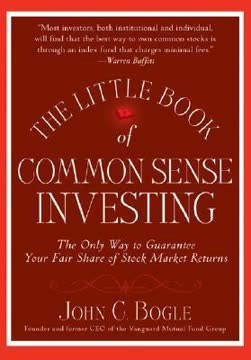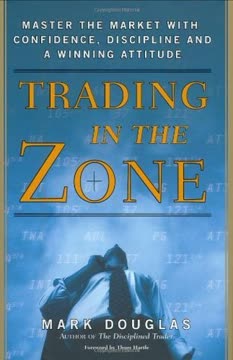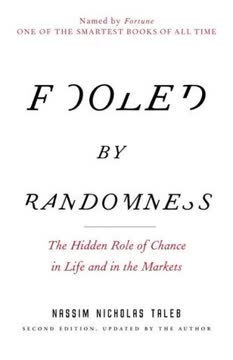つの重要なポイント
1. 新しい経済における不公平な優位性としての金融教育
「お金が私たちを豊かにするのではない。知識がそうするのだ。」
新しい経済現実: 1971年に米ドルが金本位制から外れて以来、世界は劇的に変わった。お金はもはやお金ではなく、負債となった。この変化は新しい経済環境を生み出し、以下のような状況をもたらした:
- インフレーションと通貨の価値低下により、貯蓄者は敗者となる
- 伝統的な金融アドバイスは時代遅れであり、潜在的に有害である
- 富裕層と貧困層の格差が急速に拡大している
金融教育の力: この新しい経済で成功するためには、金融教育に投資する必要がある。これには以下の理解が含まれる:
- キャッシュフロー・クアドラント(従業員、自営業者、ビジネスオーナー、投資家)
- 資産と負債の違い
- パッシブインカムとキャッシュフローの生成方法
- 富裕層に有利な税戦略
この知識を得ることで、個人は複雑な金融世界をナビゲートし、情報に基づいた意思決定を行い、経済状況に関係なく富を築くことができる。
2. 税制は従業員よりも起業家と投資家を優遇する
「お金のために一生懸命働けば働くほど、税金を多く払うことになる。」
税制の構造: 税法は経済に利益をもたらす特定の行動を奨励するように設計されている。このシステムは以下を優遇する:
- ビジネスオーナー(Bクアドラント)
- 投資家(Iクアドラント)
対して:
- 従業員(Eクアドラント)
- 自営業者(Sクアドラント)
主要な税の利点: 起業家と投資家は以下の利点を享受できる:
- パッシブインカムとポートフォリオインカムに対する低税率
- 様々な戦略を通じた税の繰延べ
- ビジネス活動に対する多くの控除とクレジット
- 税の利益を受けながら負債をレバレッジとして使用する機会
これらの利点を活用するためには、高給を得ることからビジネスを構築し、収益を生む資産を取得することに焦点を移す必要がある。これには、税効率の高い戦略を理解し実行するためのマインドセットと金融教育の変化が必要である。
3. 負債を活用して資産を取得し、富を築く
「何もないところから、または他人のお金や銀行のお金でお金を作る方法を知った瞬間、人は別の世界に入る。」
良い負債と悪い負債: すべての負債が同じではない。重要なのは戦略的に負債を使用すること:
- 良い負債:収益を生む資産を取得するために使用される
- 悪い負債:負債や消費財を購入するために使用される
負債を活用して富を築く: 成功した投資家は負債を使用して:
- 収益を生む資産(例:賃貸物件)を取得する
- レバレッジを通じて投資収益を増加させる
- 特定の種類の負債に関連する税の利益を享受する
例戦略: 負債を使用して賃貸物件を購入し、テナントが住宅ローンを返済し、以下の利益を享受する:
- 物件価値の上昇
- 賃料からの月々のキャッシュフロー
- 住宅ローン利息と減価償却に対する税控除
負債の使用をマスターすることで、投資家は富の創造を加速し、貯蓄に頼るだけの人や負債を避ける人よりも早く経済的自由を達成することができる。
4. 金融知識とコントロールでリスクを軽減する
「投資はリスクが高いわけではない。金融教育の欠如が非常にリスクが高い。」
リスクの再定義: 多くの人は投資が本質的にリスクが高いと信じている。しかし、リスクはしばしば以下の結果である:
- 知識の欠如
- コントロールの欠如
- 不適切な意思決定
リスクを軽減するための戦略:
- 金融教育に投資して様々な資産クラスを理解する
- 市場と投資の分析スキルを開発する
- ヘッジと保護のための金融商品を学ぶ
- キャッシュフローに焦点を当て、キャピタルゲインに依存しない
- 一つの資産クラス内だけでなく、異なる資産クラス全体で分散投資する
コントロール対分散: 伝統的なアドバイスはリスクを軽減するために分散を強調する。しかし、真のリスク軽減は知識とスキルを通じてコントロールを増やすことから来る。特定の投資分野で専門家になることで、情報に基づいた意思決定を行い、市場の変動をより効果的にナビゲートすることができる。
5. お金のためではなく、資産とキャッシュフローのために働く
「富裕層はお金のために働かない。」
パラダイムシフト: 給料のために働く代わりに、継続的なキャッシュフローを生む資産を取得することに焦点を当てる。このアプローチは以下をもたらす:
- 経済的自由
- 税負担の軽減
- 経済的な低迷に耐える能力
追求すべき収入の種類:
- パッシブインカム(例:賃貸収入、ロイヤリティ)
- ポートフォリオインカム(例:配当金、キャピタルゲイン)
- レジデュアルインカム(例:ネットワークマーケティング、オンラインビジネス)
資産カラムの構築: キャッシュフローを生む資産を体系的に取得する:
- 賃貸物件
- 配当を支払う株式
- 継続的な収益モデルを持つビジネス
- 知的財産(特許、著作権)
高給を得ることに焦点を当てるのではなく、資産カラムを構築することに焦点を当てることで、個人は持続的な富を築き、経済的独立を達成することができる。
6. ビジネス、不動産、技術的投資のスキルを開発する
「BとIの側で学べば学ぶほど、稼げるようになる。時間が経つにつれて、教育が複利で増えるように、リターンも増える。」
富の創造に必要なスキル:
-
ビジネス/起業家精神:
- セールスとマーケティング
- チームビルディングとリーダーシップ
- システム開発
- 財務管理
-
不動産:
- 物件の分析と評価
- 融資戦略
- 物件管理
- 市場動向の分析
-
技術的投資:
- チャートの読み方と技術分析
- 市場サイクルの理解
- リスク管理技術
- デリバティブやその他の金融商品
継続的な学習: これらの分野での継続的な教育にコミットする:
- セミナーやワークショップ
- メンタープログラム
- 実際の経験と実践
- 成功した投資家や起業家とのネットワーキング
これらの重要な分野で専門知識を開発することで、個人は機会を特定し、情報に基づいた意思決定を行い、様々な資産クラスでリターンを最大化することができる。
7. 最大のリターンを得るためにレベル5の資本主義投資家になる
「無限のリターンとは:何もないところからお金を得ること。」
投資家の5つのレベル:
- 金融知識ゼロ
- 貯蓄者は敗者
- 忙しすぎる
- プロフェッショナル
- 資本主義者
レベル5の資本主義投資家の特徴:
- 他人のお金(OPM)を使って投資する
- 資産の創造と取得に焦点を当てる
- 税の利点を理解し活用する
- 無限のリターンを追求する(初期投資を回収しながら所有権を保持する)
- B(ビジネス)とI(投資家)の両方のクアドラントで活動する
レベル5投資家になるためのステップ:
- 強固な金融教育の基盤を築く
- レベル4のプロフェッショナル投資家としての経験を積む
- 専門家チーム(法務、税務、財務)を構築する
- キャッシュフローを生むビジネスを創造または取得する
- レバレッジとOPMを使用して投資を拡大する
- リスクを最小化し、リターンを最大化する方法を継続的に模索する
レベル5の資本主義投資家を目指すことで、個人は最小限の自己資本リスクで最高レベルの富と経済的自由を達成することができる。
最終更新日:
FAQ
What's Unfair Advantage by Robert T. Kiyosaki about?
- Focus on Financial Education: The book emphasizes the importance of financial education as a means to gain an unfair advantage in wealth creation.
- Critique of Traditional Education: Kiyosaki argues that traditional education does not prepare individuals for financial success in the modern economy.
- Economic Transition: It discusses the shift from the Industrial Age to the Information Age, highlighting the obsolescence of job security and traditional savings methods.
- Real-Life Investments: Kiyosaki shares personal experiences and strategies for investing in real estate and understanding the rules of money today.
Why should I read Unfair Advantage by Robert T. Kiyosaki?
- Gain Financial Insights: The book provides insights into financial education often overlooked in traditional schooling.
- Empowerment Through Knowledge: It empowers readers to take control of their financial future by emphasizing proactive learning.
- Learn from Real Experiences: Kiyosaki shares his journey and lessons from successes and failures, making the content relatable.
- Prepare for Economic Changes: The book prepares readers for expected economic volatility, encouraging proactive financial strategies.
What are the key takeaways of Unfair Advantage by Robert T. Kiyosaki?
- Financial Education is Crucial: Kiyosaki stresses that financial literacy is essential for navigating modern finance complexities.
- Use Debt Wisely: The book teaches leveraging debt as a tool for acquiring assets and generating cash flow.
- Question Traditional Advice: Kiyosaki encourages challenging conventional wisdom about saving, investing, and job security.
- Understanding Assets vs. Liabilities: Distinguishing between assets and liabilities is fundamental to building wealth.
What are the best quotes from Unfair Advantage by Robert T. Kiyosaki and what do they mean?
- “Savers are losers.”: This highlights the belief that saving money in a depreciating currency is detrimental to wealth accumulation.
- “Choose your teachers wisely.”: Emphasizes learning from those with real-world financial success rather than traditional educators.
- “The harder you work for money, the more you pay in taxes.”: Suggests that financial education can help minimize tax burdens.
How does Unfair Advantage by Robert T. Kiyosaki define assets and liabilities?
- Assets Put Money In: Assets are defined as anything that puts money in your pocket, like rental properties or investments.
- Liabilities Take Money Out: Liabilities are things that take money out of your pocket, such as a personal residence or car.
- Importance of Financial Literacy: Understanding the difference is crucial for building wealth, as many mistakenly consider their homes as assets.
What is the CASHFLOW Quadrant in Unfair Advantage by Robert T. Kiyosaki?
- Four Types of Income: The quadrant categorizes individuals into Employees (E), Self-Employed (S), Business Owners (B), and Investors (I).
- Focus on B and I: Kiyosaki argues for operating in the B and I quadrants for financial freedom through business ownership and investments.
- Understanding Cash Flow: It helps individuals understand income sources and how to shift towards more favorable financial positions.
How does Unfair Advantage by Robert T. Kiyosaki address the concept of inflation?
- Inflation Diminishes Savings: Kiyosaki argues that inflation erodes money's purchasing power, making saving ineffective long-term.
- Invest in Tangible Assets: He suggests investing in real estate, gold, and silver to combat inflation, as they retain value over time.
- Understanding Money Dynamics: The book encourages understanding how government policies and economic conditions affect inflation and finances.
What is the significance of debt in Unfair Advantage by Robert T. Kiyosaki?
- Debt as a Tool: Kiyosaki views debt as a necessary tool for wealth creation, allowing leverage of other people's money to acquire assets.
- Tax Advantages: Using debt can provide tax benefits, as interest payments on loans can often be deducted from taxable income.
- Risk Management: While beneficial, Kiyosaki emphasizes managing debt wisely to avoid financial pitfalls.
What strategies does Unfair Advantage by Robert T. Kiyosaki suggest for investing?
- Start Small and Learn: Kiyosaki advises starting with small investments to gain experience before moving to larger deals.
- Focus on Cash Flow: Emphasizes investing for cash flow rather than capital gains, as cash flow provides ongoing income.
- Continuous Education: Stresses the need for ongoing financial education to adapt to changing market conditions.
How does Unfair Advantage by Robert T. Kiyosaki suggest one should approach financial education?
- Invest Time in Learning: Encourages prioritizing financial education through courses, books, and mentorship from successful investors.
- Question Traditional Education: Challenges the conventional education system for failing to teach practical financial skills.
- Adopt a Growth Mindset: Promotes continuous learning and adaptation, essential for navigating modern finance complexities.
What are the Five Levels of Investors in Unfair Advantage by Robert T. Kiyosaki?
- Investor Levels Explained: Kiyosaki outlines five levels, from zero financial intelligence to seasoned capitalists.
- Path to Improvement: The levels serve as a framework for assessing investment knowledge and identifying growth areas.
- Importance of Education: Highlights the significance of continuous learning and adaptation in the investment landscape.
How can I apply the concepts from Unfair Advantage by Robert T. Kiyosaki to my life?
- Start with Financial Education: Invest in financial education through books, courses, and practical experiences.
- Assess Your Financial Position: Use the CASHFLOW Quadrant to evaluate your income generation and identify improvement areas.
- Take Action: Apply principles of leveraging debt, understanding taxes, and investing in cash flow-generating assets.
レビュー
本書『Unfair Advantage』は賛否両論の評価を受けており、評価は1から5つ星までさまざまである。多くの読者は、キヨサキ氏の金融教育への強調と投資に対する独自の視点を高く評価している。しかし、批評家たちは本書が繰り返しが多く、具体的なアドバイスに欠け、疑わしい金融戦略が含まれていると指摘している。著者の税金、借金、キャッシュフローに関する洞察を称賛する声もある一方で、そのアイデアが単純化されすぎている、または潜在的にリスクがあると感じる人もいる。本書の不動産投資と型破りな金融知識への焦点は、一部の読者には共感を呼ぶが、他の読者には疎外感を与えることもある。
Similar Books
























